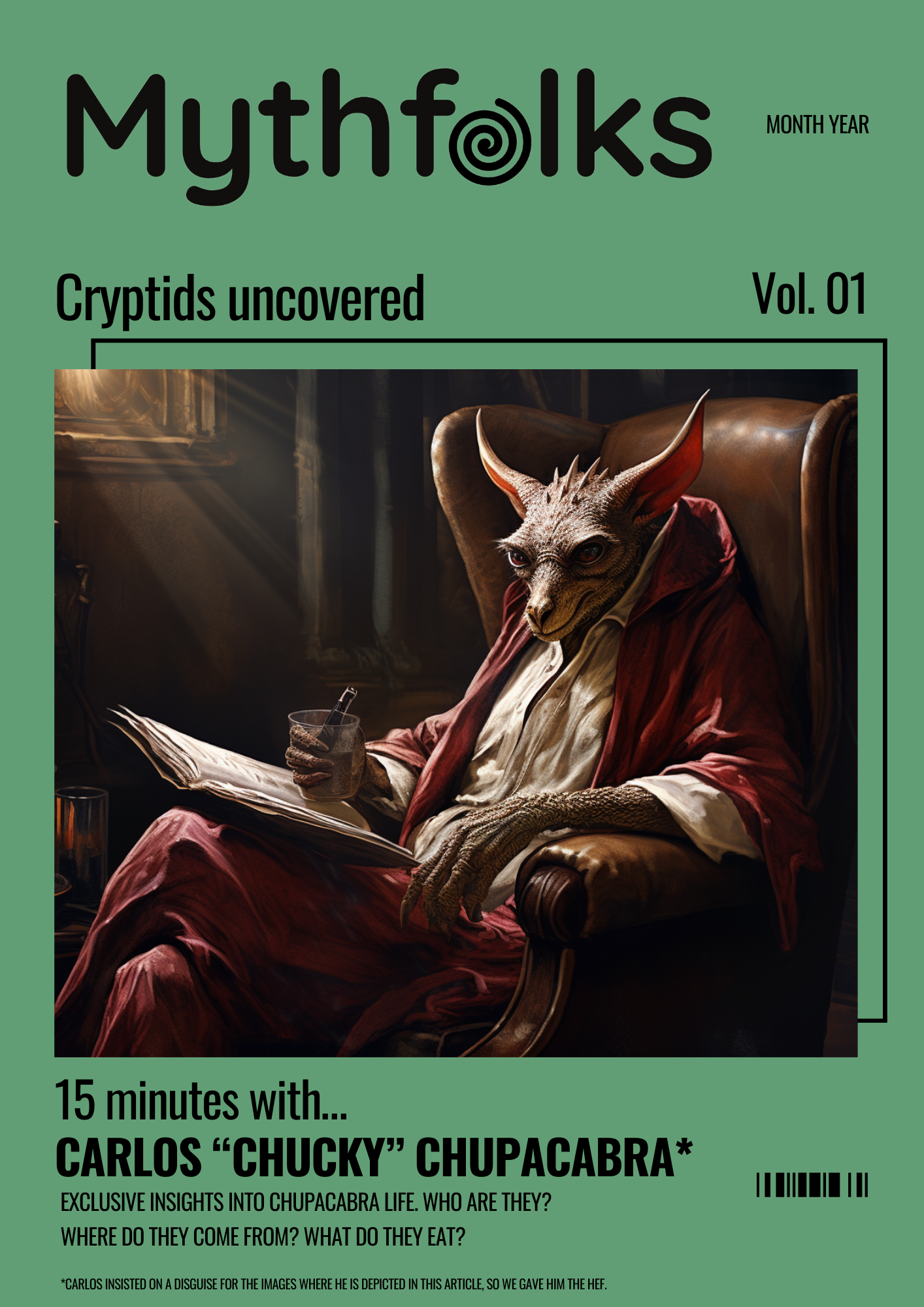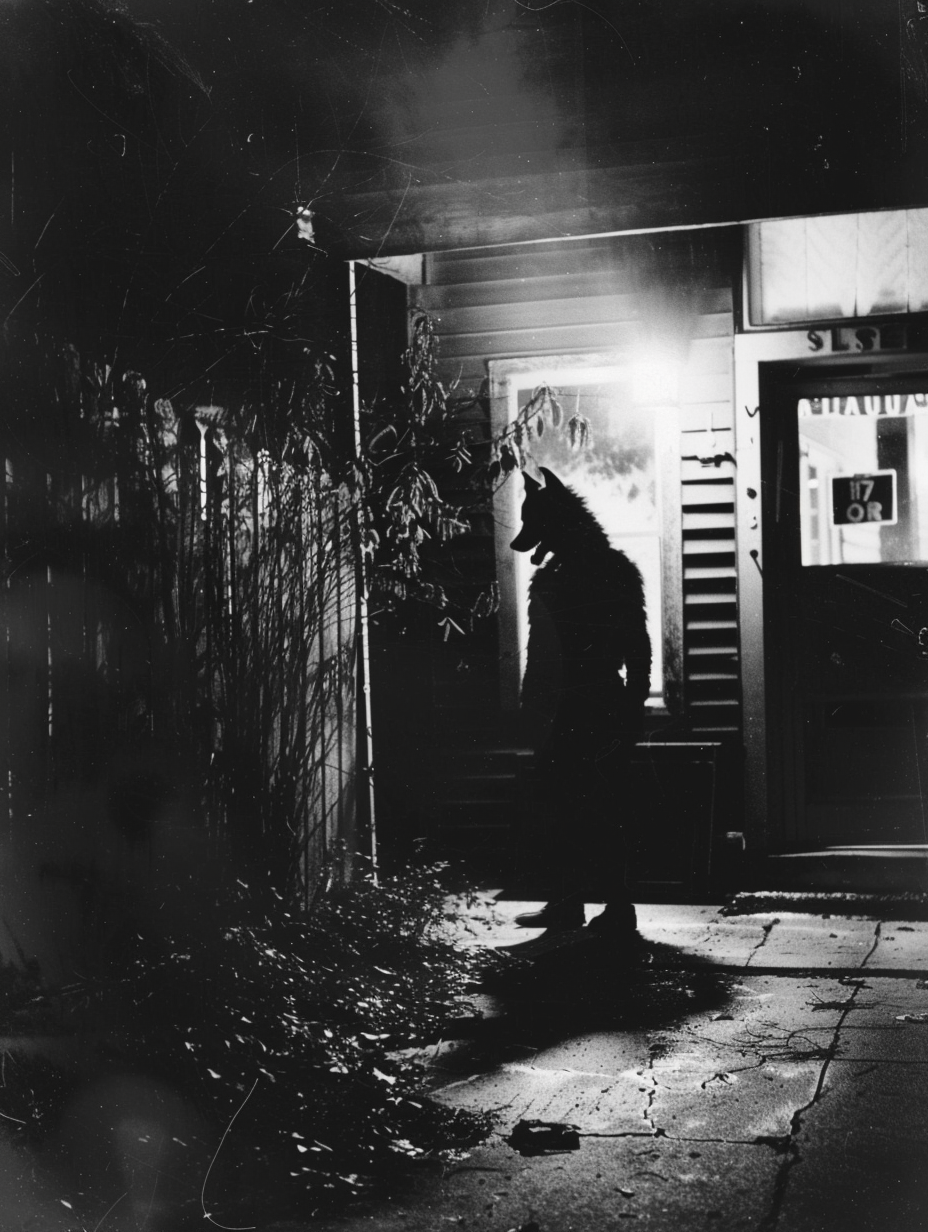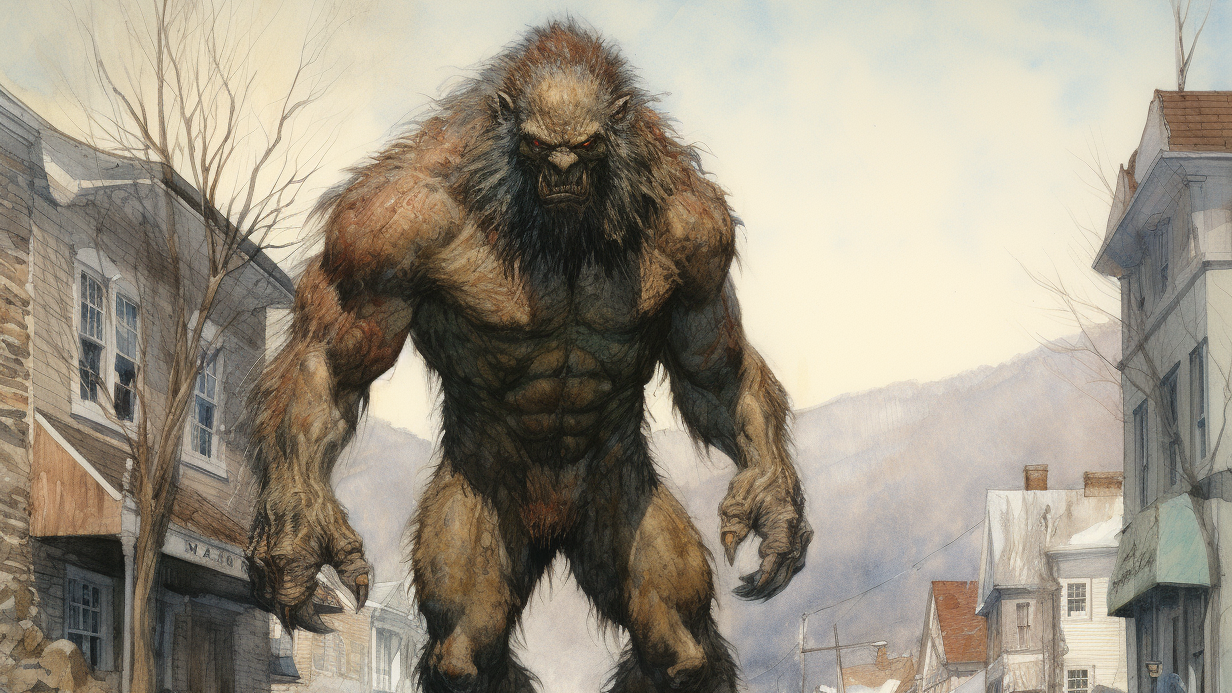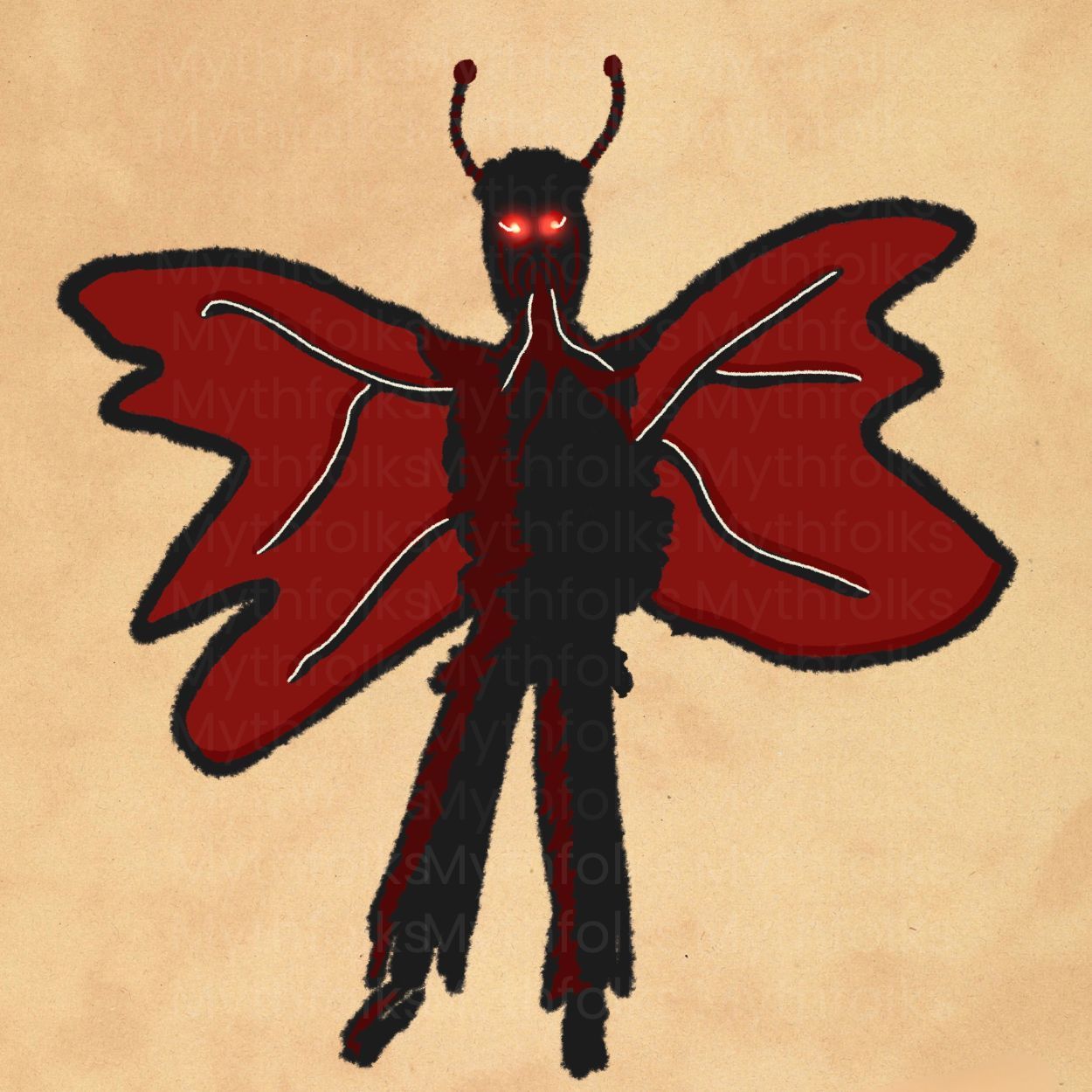Is Santa a cryptid? The man, the mythology and the legend of St. Nicholas & Santa Claus
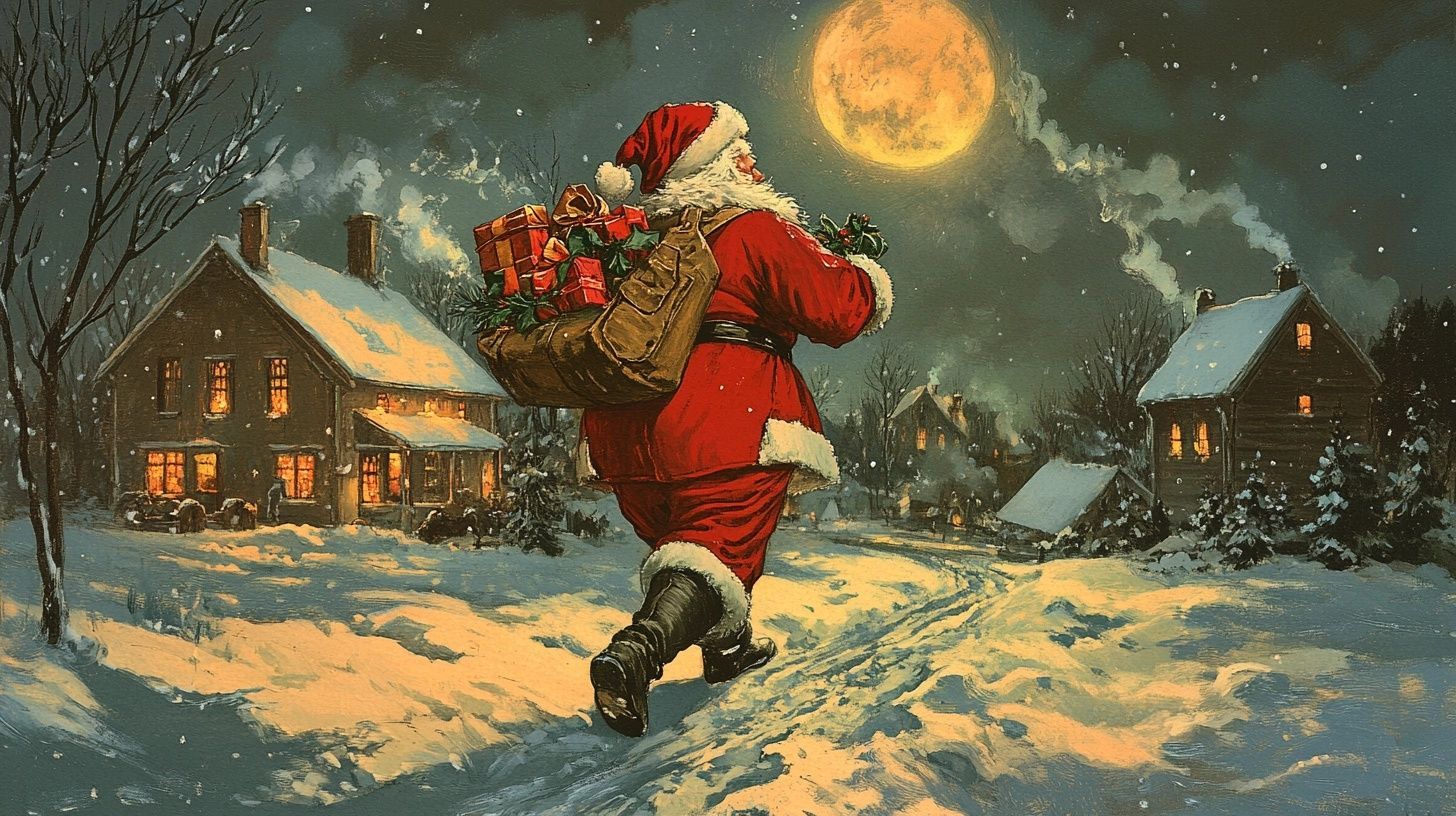
Is Santa a cryptid? He might seem to share some similarities with the category of creatures not proven to exist. But in short, no, Santa Claus is not a cryptid.
But Santa is a cultural icon with a history that spans centuries and geographies, a blend of folklore and real historical influences. He might not be a cryptid but he is a whole lot more than just a jolly guy in a red suit who appears every Christmas.
So here's a little exploration into the origins and mythology of the beloved Santa Claus, starting with the real story of a very famous Saint…
Published: 14th Nov 2024
Author: Mythfolks
The legends of the real St. Nicholas
The story of Santa begins with a real person - St. Nicholas of Myra, a 4th-century Greek bishop in what is now Turkey.
St. Nicholas was known for his generosity, kindness and compassion and many legends grew around his life, including secretly providing dowries for three poor sisters, resurrecting children killed by an evil butcher, calming storms at sea and saving three men from execution.
Even after death the stories kept coming. One legend tells of a Christian boy, who had been captured and enslaved by a pagan king.
He cried on Saint Nicholas's feast day, remembering his family celebrating back home. After the king mocked his faith, Saint Nicholas appeared, whisked the boy away and brought him safely home to his family, who were honoring the saint.
These acts in life - and beyond - led to his reputation as a protector and giver of gifts and he became a very popular saint across Europe.
After his death on December 6th in 343 AD, to honor him, that day was established by the early Christian Church as his feast day and it became a time for gift-giving and charity in his memory.
Over time, this celebration would contribute to the development of the figure of Santa Claus, who also represents the spirit of giving and kindness during the holiday season.
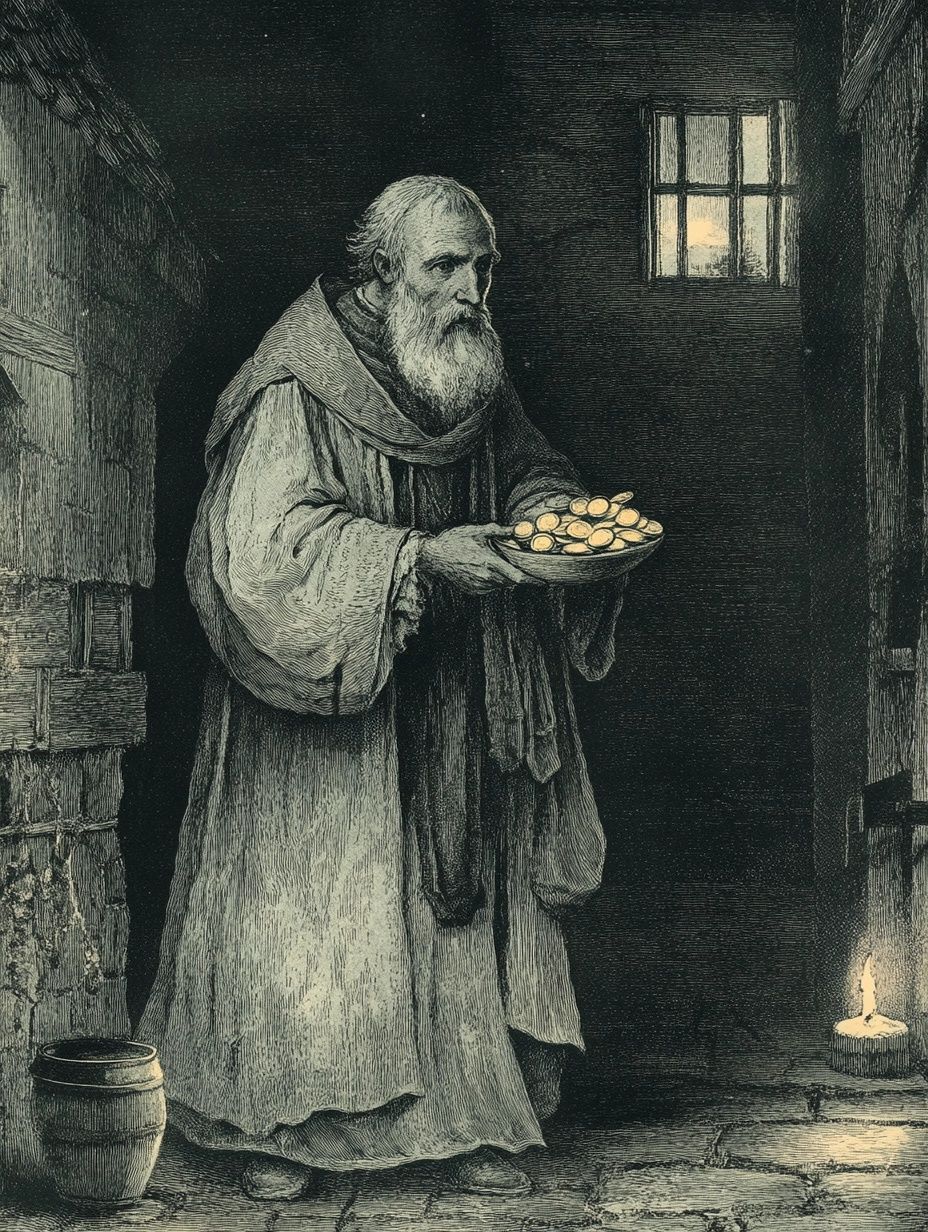
Evolution of Santa in Europe
From the early Middle Ages, legends of St. Nicholas really started to transform into various regional gift-giving figures, laying the foundation for Christmas traditions across Europe.
The most well known is the Dutch Sinterklaas, the legendary figure that would ultimately spawn the character of Santa.
Sinterklaas v.s Santa Claus
Sinterklaas has strong roots in the lore of St. Nicholas. He’s depicted as a serious, dignified elderly man wearing a bishop's attire, including a red robe, mitre and staff and riding a white horse named Amerigo.
Sinterklaas's feast is celebrated on December 5th, known as Sinterklaasavond (St. Nicholas' Eve), when children place their shoes by the fireplace, filled with carrots or hay for the horse, hoping for small gifts or treats. Actually the Dutch celebrate twice as they still have a Christmas Day too!
St. Nick and Sinterklaas also heavily influenced other regional European variations including the English, Father Christmas (around the 16th century) and the German Weihnachtsmann or “Christmas Man” (around the 19th century).
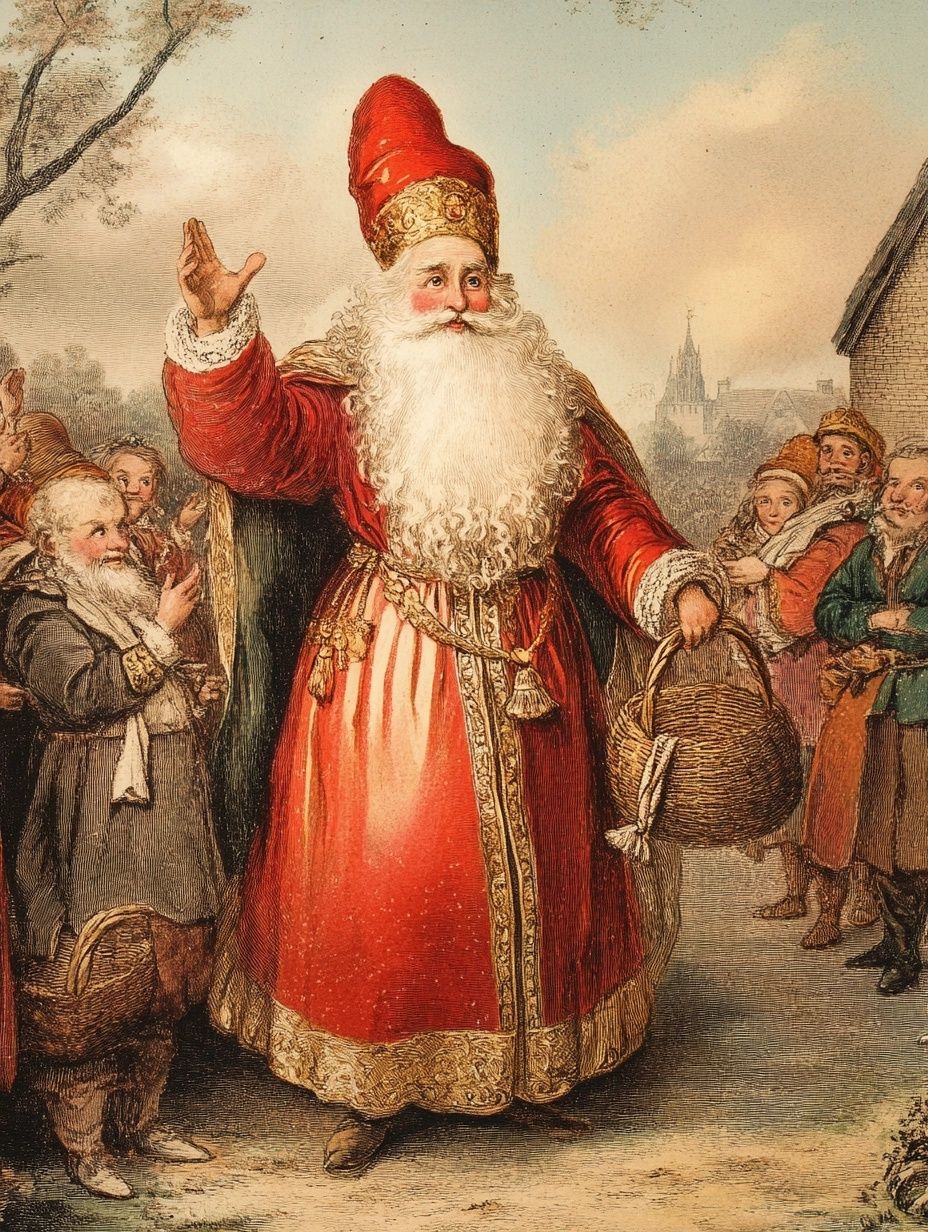
In contrast, Santa is a thoroughly American figure, an evolution of Sinterklaas originally brought over to the States by Dutch settlers, to New Amsterdam (now New York).
Over time, the settler stories combined with writers and artists and new versions of this sombre but kind character emerged - by the late 18th century, Santa Claus was officially born.
But not quite as we know him now...
From serious to jolly - how Santa came to look like he does today
The poet Clement Clarke Moore famously depicted Santa Claus in his 1823 poem, "A Visit from St. Nicholas" (commonly known as “’Twas The Night Before Christmas").
Moore described Santa as a jolly, “plump…elf”, his “cheeks were like roses”, his beard “was as white as the snow” and he was dressed all in fur.
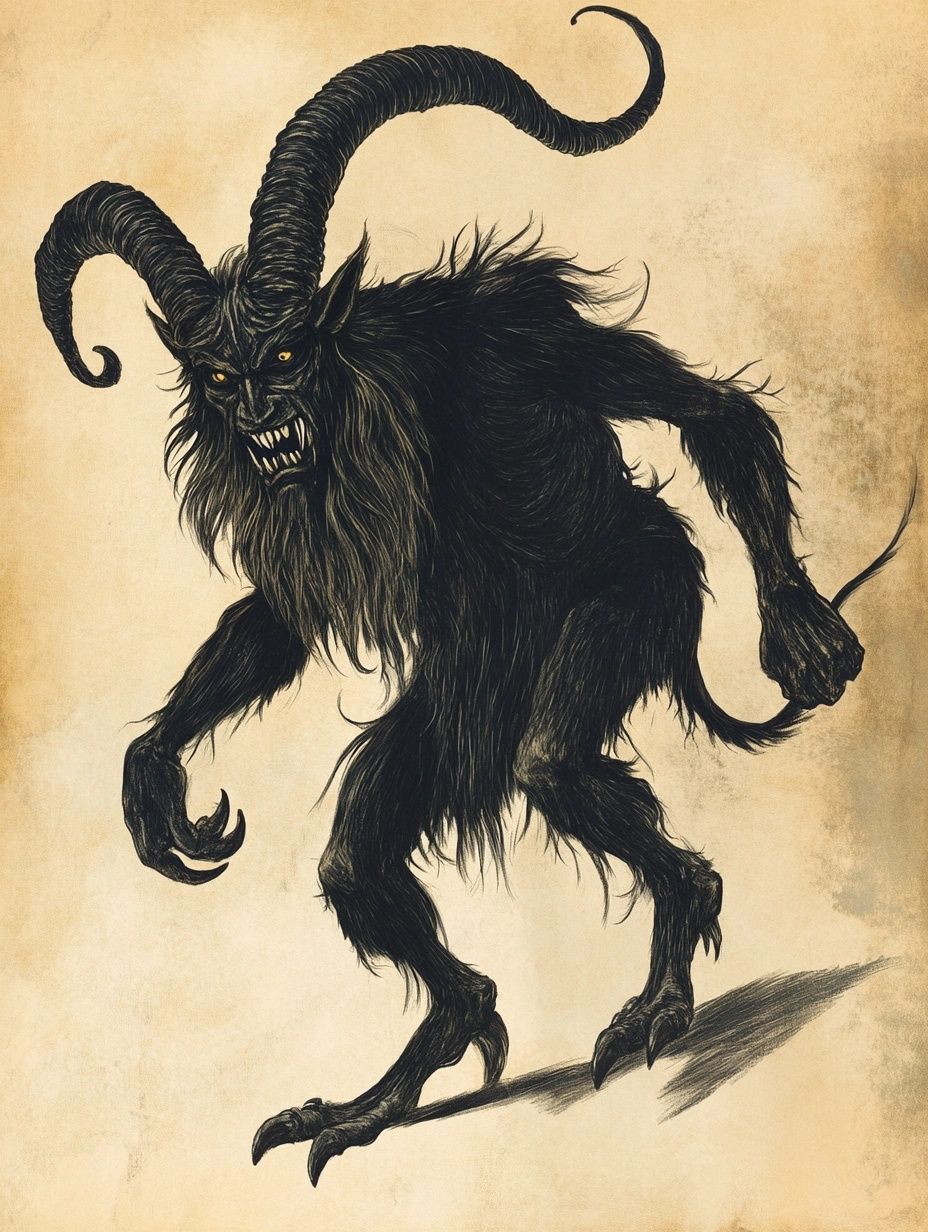
This playful and magical version of Santa stood in contrast to earlier depictions, which portrayed him more like St. Nick - tall and serious, dressed in traditional bishop robes.
By 1849, some early illustrations showed him in a fur hat, jacket and knee-length pants.
The 1860s brought further change when cartoonist, Thomas Nast, began drawing Santa, mixing elements from St. Nicholas with whimsical details, inspired by other folklore creatures, like elves.
Over the years, Santa continued to depicted in different ways - sometimes in a long coat like Father Christmas and sometimes in a red suit.
In the 1930s, Coca-Cola cemented Santa’s look as we know it, the jolly, red-and-white-suited figure (it has become an urban legend of itself, that the company created this based on the color of their cans - but this was not true!).
Throughout the 20th century, Santa’s image would continue to sporadically reflect changing pop culture trends - some illustrations from the 60s for example, feature Santa wearing neon colors and riding a hot pink sleigh.
But the image of Santa as a merry, plump man with a red suit and white beard has long been solidified since the early 20th century and is now a universally recognized symbol of Christmas cheer.
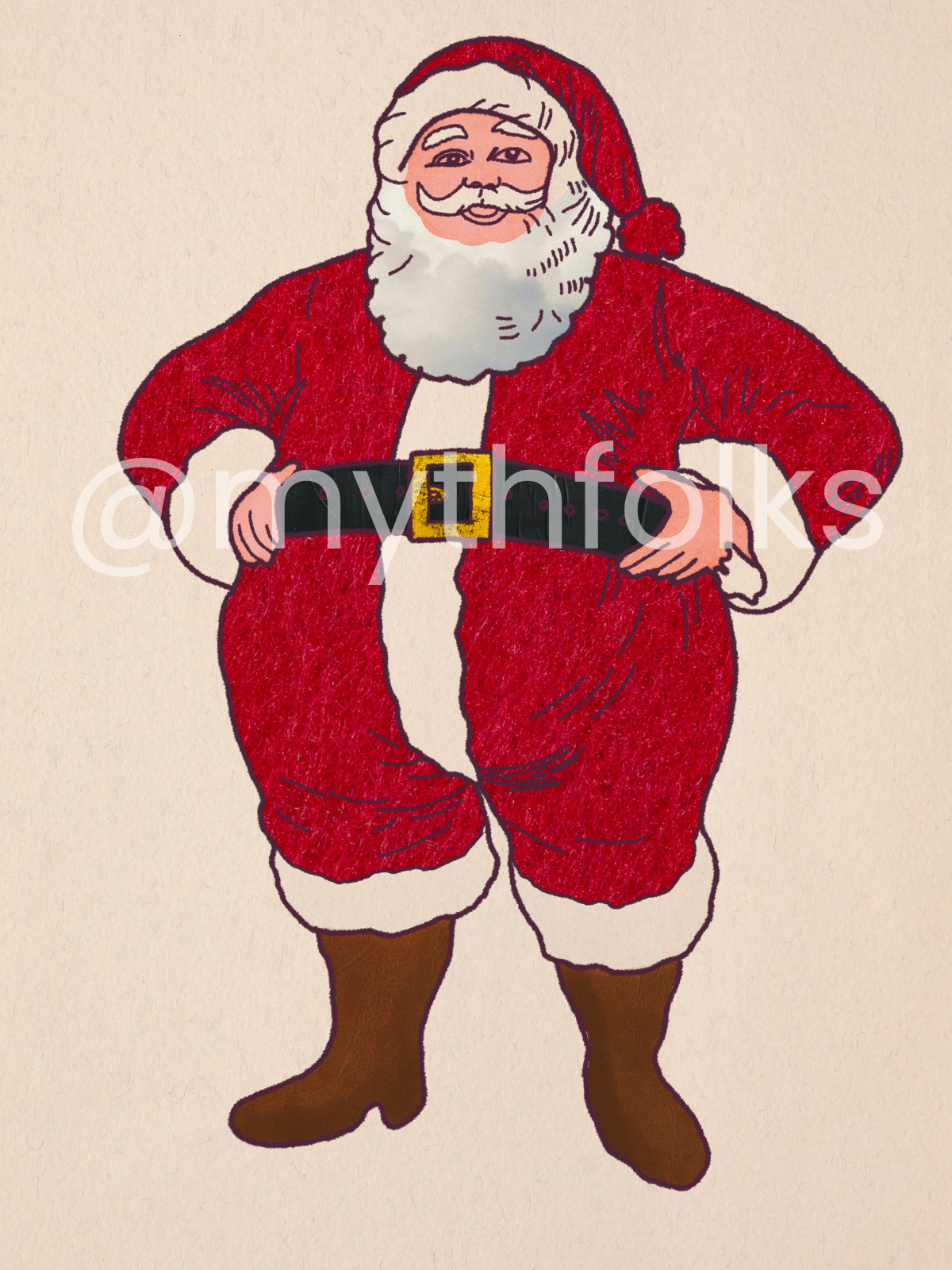
Fun fact:
Kris Kringle, sometimes used as another name for Santa - thank you Miracle on 34th Street - is actually a misinterpretation of the German term "Christkind" or "Christkindlein," which means "Christ child." In German, Austrian and other parts of central and eastern European traditions, the Christkind was introduced as a gift-bringer, especially after many areas moved away from celebrating saints and shifted focus towards other figures.
This figure is often portrayed as a young, angelic child who brings gifts on Christmas Eve. In German-speaking countries, the Christkind remains a significant holiday figure and one that is very distinct from Santa Claus.
Norse Mythology’s role in Santa’s evolution
Like all good folklore stories, the truth of origin is often distorted. The idea that Norse mythology played a significant role in shaping the modern image of Santa Claus appears to be, at best, very loosely connected, but more likely not relevant at all.
The main misunderstanding seems to revolve around Odin. He was often depicted as an old, bearded man riding an eight-legged horse named Sleipnir.
During the Yule festival - that marked the winter solstice - children would leave out offerings of food for Sleipnir, hoping for small gifts from Odin in return.
This tradition is sometimes compared to the modern practice of leaving cookies for Santa, but the connections are tenuous.
The supposed similarities between Odin - like his long white beard, his role as a bringer of gifts and his travels through the sky - and Santa Claus have often, it seems, been overstated.
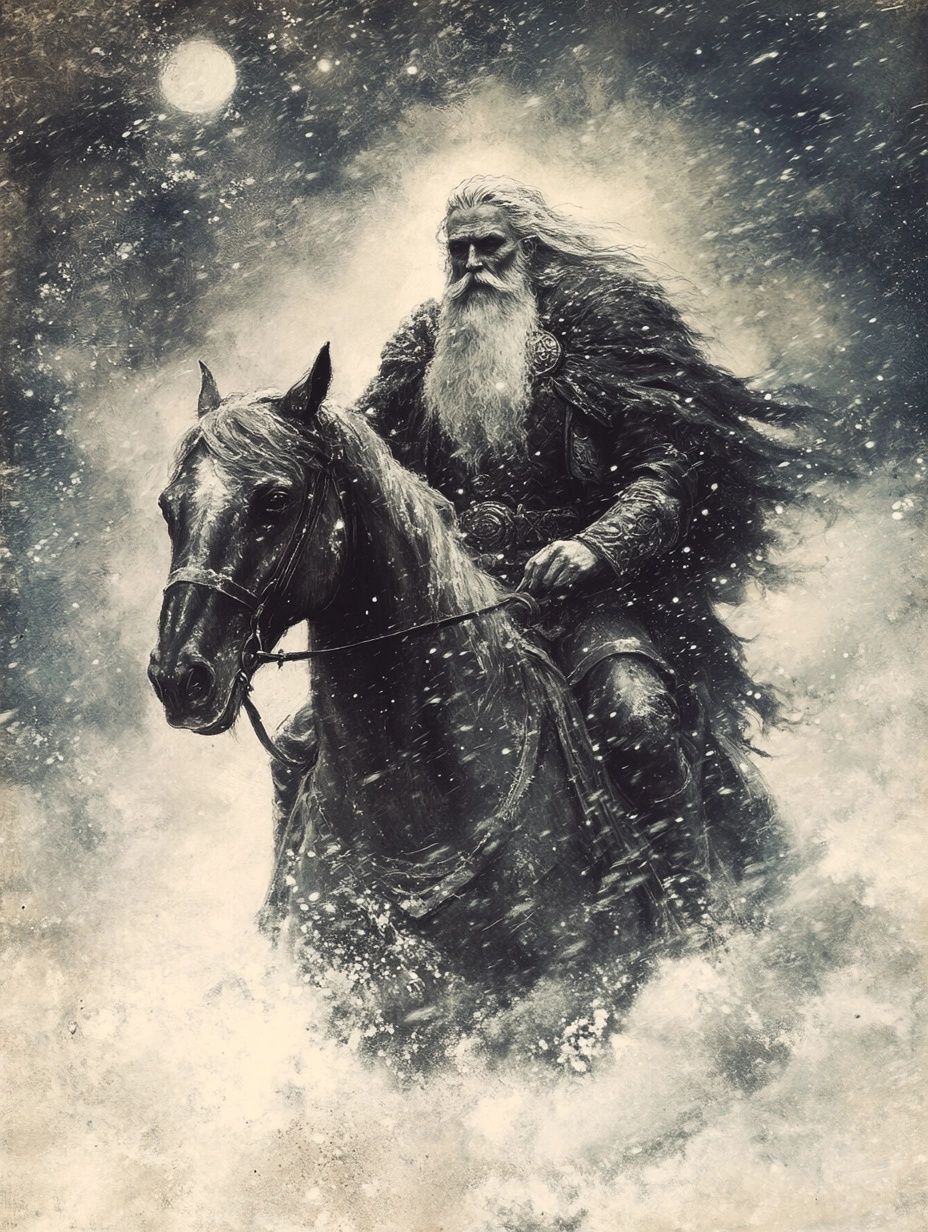
Influence of other mythological figures
Other mythologies have also been linked to Santa over time, though like Odin, the connections aren't always clear-cut.
Silenus, from Greek mythology, was a companion and tutor of Dionysus (Bacchus) and was depicted as a jovial, plump and good-natured god associated with drink and revelry.
While Santa can be viewed as a “sobered” version of Silenus, this connection is largely speculative and really lacks any concrete evidence.
The god Saturn, from Roman mythology was portrayed as a dignified elderly figure and the festival named after him, Saturnalia, had a focus on feasting, fun and gift-giving. Which obviously again seems to parallel nicely with Christmas traditions.
But, the extent to which Saturn directly influenced Santa's depiction is debated and these elements were common in many cultural festivities.
The association between Odin, Silenus and Saturn and Santa, likely became popular due to the appeal of a mystical, ancient backstory that adds depth to Santa’s folklore.
But the modern version of Santa Claus is much more closely linked to St Nicholas than the characters of these ancient mythologies.
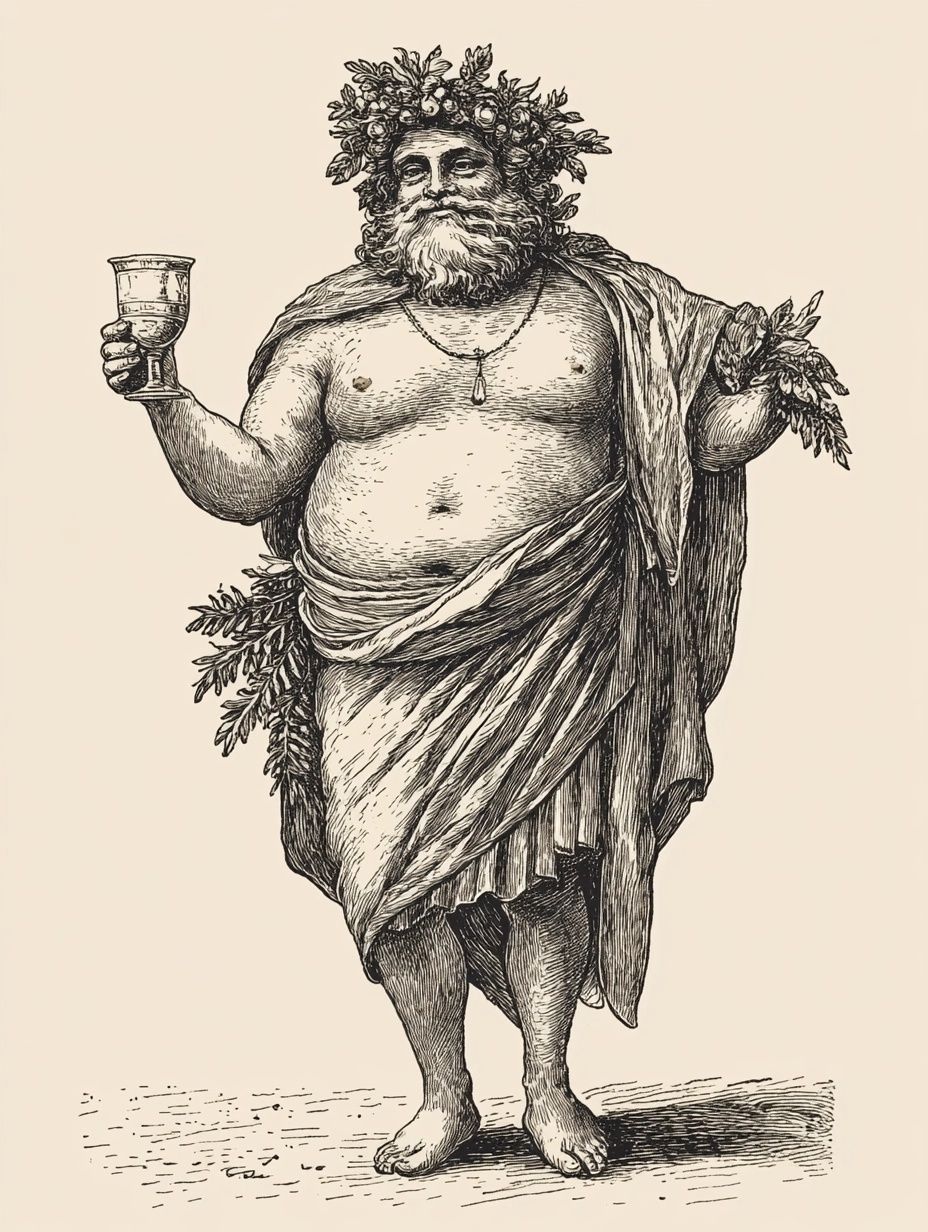
If Santa isn’t a cryptid…then what is he?
So Santa Claus isn’t a cryptid but his actual classification isn’t that clear cut. I think he’s most accurately described as either a legendary figure or a folk hero. Both these types of folklore classification have some element of “real history” at their origin though Santa could also loosely be described as a mythical creature or just a myth. Glad that's cleared up!
Regardless of what he is, in the world of folklore and mythology, one thing is certain - there is very little else like Santa Claus.
Article sources
- Walsh, William S. The Story of Santa Klaus: Told for Children of All Ages from Six to Sixty. New York: Moffat, Yard and Company, 1909.
- https://www.stnicholascenter.org/who-is-st-nicholas
- J. Simpson and S. Roud, The Oxford Dictionary of English Folklore (Oxford, 2001)
- https://www.cmu.edu/cmnews/extra/031215_nitebeforexmas.html
- https://www.metmuseum.org/art/collection/search/429261


